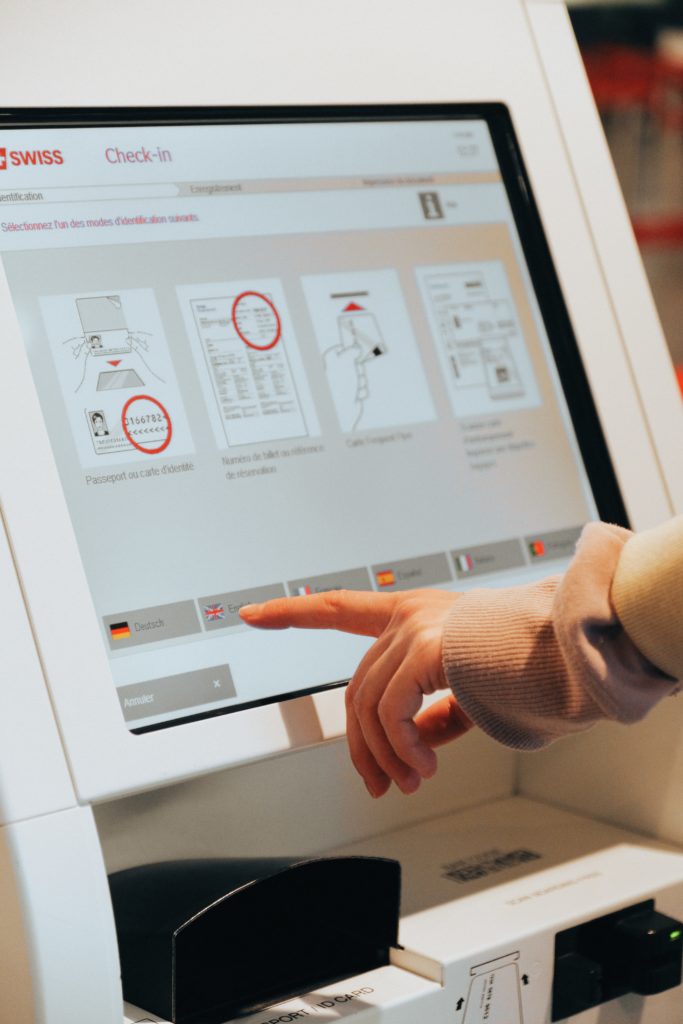When you think of a self-service kiosk or self-ordering kiosk, you might not fully understand it or its capabilities and how it could benefit your business. This article details what they are, what types are on the market, and how to know which type is best for your company.
What is a self-service kiosk?
Businesses don’t require human employees for all customer interactions. The best example of technology allowing for a mechanical replacement of a human is the vending machine. Since the 1880s, these auto-dispensing boxes have been synonymous with vacant hallways, bathrooms, and bars. They serve all types of products in all kinds of places. You can even buy headphones from high-tech vending machines in certain airports.
A self-service kiosk is a digital vending machine. Some kiosks deliver specific goods or services, while others allow significant flexibility to the customer. The basic premise, though, surrounds the utility of a touch screen device that replaces or expands upon the current functions of human interaction. If this definition seems too broad, don’t worry, it’s on purpose. Today’s self-service kiosks are highly flexible, functional, and critical when there is a significant demand for immediate attention. As a result, many industries can benefit from possessing at least one!
What are some examples of self-service kiosks?
To understand what self-service kiosks are, you should look at the most familiar examples in everyday life. Here is a quick list of the most common uses for self-service kiosks.
- Airport flight self-check-in and ticket terminals
- Movie theater ticket dispensers (kiosk point of sale, kiosk pos)
- Checkout services at supermarkets and other consumer goods stores
- Government self-service counters
- Quick self-order menu pos kiosks at restaurants
- Self-check-in at hotels, leisure centers, and medical facilities
- ATMs
What are the different types of applications for self-service kiosks?
From the list above, almost all industries have benefited from one type of kiosk or another. However, there does seem to be a distinct difference in categories of self-service kiosks. You will provide a better customer experience via kiosks once you’ve learned the different varieties between them. Here is a breakdown of the three common categories of applications.
Check-In Services: This category is the most common type of kiosk. You will find these in hotels, airports, gyms, spas, government buildings, healthcare facilities, and anywhere that regularly uses appointments or walk-in services. However, Check-in kiosks aren’t standard in browsing stores like consumer goods or retail stores.
Ordering or Paying for Services: This category is a growing trend in the kiosk business. These kiosks are widespread in restaurants (small and large) and retail/consumer goods stores. These are popular when a customer has a set list of items to buy and doesn’t have much time. They can easily order or checkout their things and leave without waiting for a free attendant at these pos kiosks.
Other Specialized Services: The benefit of a kiosk is that it is just a touchscreen computer. If human interaction can be made digital, it can be put in a kiosk. Many state governments are installing kiosks in their offices to keep wait times down. These kiosks process car registration services or other simple government regulatory services that don’t require a human to complete.
How do you know if self-service kiosks are suitable for you?
The best way to determine what type of kiosk is right for your business is to understand what your customer wants from you. This question may seem obvious, but sometimes it isn’t. For example, can you replace all your person-to-person interactions with a kiosk? Or could you replace only a portion of the interactions with a kiosk? What part of the customer interaction should be accelerated, and will that item increase your sales? What is a potential headache that your customers deal with that could be replaced with a streamlined digital kiosk?
All these questions are essential to answer. If you don’t identify the exact process to streamline digitally, you could create a nightmare situation where the kiosk fails to function in the way needed by the customer properly. You could either waste time, money, or both. So, be methodical when you are identifying the pressure points of your business. Understand the needs of the customer and the desired outcomes of your business.
If you need help figuring out these complicated customer journey issues and how to apply kiosk technology to them, reach out to Parselytics. Our extensive knowledge of business intelligence and kiosk development (POS, e-commerce, self-service) will ensure that you are confident in your kiosk integrations.




